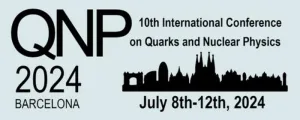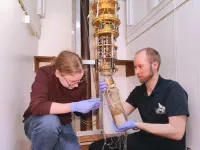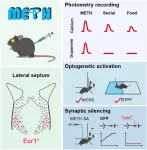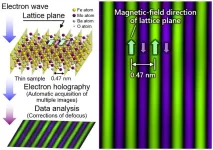(Press-News.org) UNIVERSITY PARK, Pa. — Treating cancer can sometimes feel like a game of Whac-A-Mole. The disease can become resistant to treatment, and clinicians never know when, where and what resistance might emerge, leaving them one step behind. But a team led by Penn State researchers has found a way to reprogram disease evolution and design tumors that are easier to treat.
They created a modular genetic circuit that turns cancer cells into a “Trojan horse,” causing them to self-destruct and kill nearby drug-resistant cancer cells. Tested in human cell lines and in mice as proof of concept, the circuit outsmarted a wide range of resistance.
The findings were published today (July 4) in the journal Nature Biotechnology. The researchers also filed a provisional application to patent the technology described in the paper.
“This idea was born out of frustration. We’re not doing a bad job of developing new therapeutics to treat cancer but how can we think about potential cures for more late-stage cancers?” said Justin Pritchard, Dorothy Foehr Huck and J. Lloyd Huck Early Career Entrepreneurial Associate Professor of Biomedical Engineering and senior author on the paper. “Selection gene drives are a powerful new paradigm for evolution-guided anticancer therapy. I love the idea that we can use a tumor’s inevitability of evolution against it.”
Newer personalized cancer medicines often fail, not because the therapeutics aren’t good but because of cancer’s inherent diversity and heterogeneity, Pritchard said. Even if a frontline therapy is effective, resistance eventually develops and the medication stops working, allowing the cancer to return. Clinicians then find themselves back at square one, repeating the process with a new drug until resistance emerges again. The cycle escalates with each new treatment until no further options are available.
“You’re playing a game of Whac-A-Mole. You don’t know which mole is going to pop up next, so you don’t know what is going to be the best drug to treat the tumor. We’re always on our back foot, unprepared,” said Scott Leighow, a postdoctoral scholar in biomedical engineering and lead author of the study.
The researchers wondered if, instead, they could get one step ahead. Could they potentially eliminate resistance mechanisms before the cancer cells have a chance to evolve and pop up unexpectedly? Could they force a specific “mole” to pop out on the board, one that they prefer and are prepared to fight?
What started as a thought experiment is proving to work. The team created a modular circuit, or dual-switch selection gene drive, to introduce into non-small lung cancer cells with an EGFR gene mutation. This mutation is a biomarker that existing drugs on the market can target.
The circuit has two genes, or switches. Switch one acts like a selection gene, allowing the researchers to turn drug resistance on and off, like a light switch. With switch one turned on, the genetically modified cells become temporarily resistant to a specific drug, in this case, to a non-small lung cancer drug. When the tumor is treated with the drug, the native drug-sensitive cancer cells are killed off, leaving behind the cells modified to resist and a small population of native cancer cells that are drug-resistant. The modified cells eventually grow and crowd out the native resistant cells, preventing them from amplifying and evolving new resistance.
The resulting tumor predominantly contains genetically modified cells. When switch one is turned off, the cells become drug-sensitive again. Switch two is the therapeutic payload. It contains a suicide gene that enables the modified cells to manufacture a diffusible toxin that’s capable of killing both modified and neighboring unmodified cells.
“It not only kills the engineered cells, but it also kills the surrounding cells, namely the native resistant population,” Pritchard said. “That’s critical. That’s the population you want to get rid of so that the tumor doesn’t grow back.”
The team first simulated the tumor cell populations and used mathematical models to test the concept. Next, they cloned each switch, packaging them separately into viral vectors and testing their functionality individually in human cancer cell lines. They then coupled the two switches together into a single circuit and tested it again. When the circuit proved to work in vitro, the team repeated the experiments in mice.
However, the team didn’t just want to know that the circuit worked; they wanted to know it could work in every way. They stress tested the system using complex genetic libraries of resistance variants to see if the gene drive could function robustly enough to counter all the genetic ways that resistance could occur in the cancer cell populations.
And it worked: Just a handful of engineered cells can take over the cancer cell population and eradicate high levels of genetic heterogeneity. Pritchard said it’s one of the biggest strengths of the paper, conceptually and experimentally.
“The beauty is that we’re able to target the cancer cells without knowing what they are, without waiting for them to grow out or resistance to develop because at that point it’s too late,” Leighow said.
The researchers are currently working on how to translate this genetic circuit so that it can be delivered safely and selectively into growing tumors and eventually metastatic disease.
Other Penn State authors on the paper include Marco Archetti, associate professor of biology; Shun Yao, a postdoctoral scholar in biology; Ivan Sokirniy, graduate student at the Huck Institutes of the Life Sciences; and Joshua Reynolds and Zeyu Yang, members of the Department of Biomedical Engineering. Co-author Haider Inam was a doctoral student in biomedical engineering at the time of the research and is currently a research scientist at the Broad Institute of MIT and Harvard. Dominik Wodarz, professor at the University of California, San Diego, also contributed to the paper.
The Huck Institutes of Life Sciences’ HITS Fund, the National Cancer Institute and the National Institute of Biomedical Imaging and Bioengineering Trailblazer award supported this work.
END
Re-engineering cancerous tumors to self-destruct and kill drug-resistant cells
Novel genetic circuit turns cancer cells into a ‘Trojan horse,’ programmed to reduce drug resistance and make them easier to treat
2024-07-04
ELSE PRESS RELEASES FROM THIS DATE:
Reversing chemotherapy resistance in pancreatic cancer
2024-07-04
Pancreatic cancer is a particularly aggressive and difficult-to-treat cancer, in part because it is often resistant to chemotherapy. Now, researchers at Stanford have revealed that this resistance is related to both the physical stiffness of the tissue around the cancerous cells and the chemical makeup of that tissue. Their work, published on July 4 in Nature Materials, shows that this resistance can be reversed and reveals potential targets for new pancreatic cancer treatments.
“We found that stiffer tissue can cause pancreatic cancer cells to become resistant to chemotherapy, while softer tissue made ...
New organic molecule shatters phosphorescence efficiency records and paves way for rare metal-free applications
2024-07-04
A research team led by Osaka University discovered that the new organic molecule thienyl diketone shows high-efficiency phosphorescence. It achieved phosphorescence that is more than ten times faster than traditional materials, allowing the team to elucidate this mechanism.
Osaka, Japan – Phosphorescence is a valuable optical function used in applications such as organic EL displays (OLEDs) and cancer diagnostics. Until now, achieving high-efficiency phosphorescence without using rare metals such as iridium and platinum has been a significant challenge. Phosphorescence, which occurs when a molecule transitions ...
International summit of experts in nuclear physics at the University of Barcelona
2024-07-04
More than two hundred international experts will take part in the 10th International Conference on Quarks and Nuclear Physics (QNP2024), a scientific summit organized by the UB Institute of Cosmos Sciences (ICCUB), which will be held in the Aula Magna of the Faculty of Biology at the University of Barcelona from 8 to 12 July. This meeting, hosted by the UB for the first time, will bring together world experts in the fields of nuclear physics and hadronic physics to discuss the latest advances in theory, experimentation and technology ...
Clever pupils don’t need to attend academically selective schools to thrive, study finds
2024-07-04
Findings published in a new peer-reviewed paper in the British Journal of Educational Studies challenges the idea that academically selective schools are necessary for clever pupils to achieve good outcomes.
Selective schools are government-funded schools that enrol only the highest performing students. Pupils take a standardized entrance exam, from which the best-scoring are enrolled.
Some argue that selective schools are necessary for bright pupils to reach their full academic potential. Selective schools can ...
Searching for dark matter with the coldest quantum detectors in the world
2024-07-04
One of the greatest mysteries of science could be one step closer to being solved.
Approximately 80% of the matter in the universe is dark, meaning that it cannot be seen. In fact, dark matter is passing through us constantly – possibly at a rate of trillions of particles per second.
We know it exists because we can see the effects of its gravity, but experiments to date have so far failed to detect it.
Taking advantage of the most advanced quantum technologies, scientists from Lancaster University, the University of Oxford, and Royal Holloway, ...
UNSW Sydney's Dr Vaishnavi Ananthanarayanan receives RMS Award for Life Sciences
2024-07-04
This accolade highlights her pioneering research in the use of a diverse array of advanced microscopy techniques to uncover fundamental biophysical processes.
Currently holding a prestigious EMBL (European Molecular Biology Laboratory) Australia Group Leader fellowship, Dr Ananthanarayanan leads one of the largest and most dynamic research group in the EMBL Australia Node in Single Molecule Science, based in the Department of Molecular Medicine in the School of Biomedical Sciences.
Her research, which focuses on motor proteins and cytoskeleton dynamics, has set new standards ...
Researchers unveils a critical role of the lateral septum in drug addiction
2024-07-04
Recently, a research team led by Dr. ZHU Yingjie from the Shenzhen Institute of Advanced Technology, Chinese Academy of Sciences has published a study in Neuron, the study presents a comprehensive transcriptional profile of the lateral septum (LS) at the single-cell level, elucidating the spatial distribution of its major neuronal types. The study shows that neurons expressing estrogen receptor 1 (LSEsr1), predominantly located in the ventral subregion of LS, play a crucial role in reward-seeking and methamphetamine (METH) addiction.
In 1954, psychologists Olds and Milner discovered the brain's reward system through intracranial ...
Efficient hydrogenolysis of 5-hydroxymethylfurfural over Ni-C3N4 catalysts
2024-07-04
Utilization of biomass as the basic feedstock for the production and chemicals and energy storage has been demonstrated to be an important alternative to achieve sustainable society, which has attracted increasing interests in both academic and industrial communities for decades. 5-hydroxymethylfurfural (HMF), one of the most important bio-based platform compounds, could serve as a bridge feedstock between biomass resources and chemicals. It is possible to synthesize a series of high-value added chemicals from HMF through hydrogenation, ...
Hitachi’s holography electron microscope attains unprecedented resolution
2024-07-04
Tokyo, Japan—A research team from Japan, including scientists from Hitachi, Ltd. (TSE 6501, Hitachi), Kyushu University, RIKEN, and HREM Research Inc. (HREM), has achieved a major breakthrough in the observation of magnetic fields at unimaginably small scales. In collaboration with National Institute of Advanced Industrial Science and Technology (AIST) and the National Institute for Materials Science (NIMS), the team used Hitachi’s atomic-resolution holography electron microscope—with a newly developed image acquisition technology and defocus correction algorithms—to visualize ...
An innovative test to diagnose chagas disease in newborns
2024-07-04
An innovative test that combines a DNA extraction system inspired by a modified 3D printer (PrintrLab) with loop-mediated isothermal molecular amplification (LAMP) could be used to detect T. cruzi infection -responsible for Chagas disease- in newborns. This is the conclusion of a proof-of-concept study conducted in the Bolivian Chaco, an endemic area for Chagas disease. The study was coordinated by the Barcelona Institute for Global Health (ISGlobal), a centre supported by "la Caixa" ...
LAST 30 PRESS RELEASES:
Heart-brain connection: international study reveals the role of the vagus nerve in keeping the heart young
Researchers identify Rb1 as a predictive biomarker for a new therapeutic strategy in some breast cancers
Survey reveals ethical gaps slowing AI adoption in pediatric surgery
Stimulant ADHD medications work differently than thought
AI overestimates how smart people are, according to HSE economists
HSE researchers create genome-wide map of quadruplexes
Scientists boost cell "powerhouses" to burn more calories
Automatic label checking: The missing step in making reliable medical AI
Low daily alcohol intake linked to 50% heightened mouth cancer risk in India
American Meteorological Society announces Rick Spinrad as 2026 President-Elect
Biomass-based carbon capture spotlighted in newly released global climate webinar recording
Illuminating invisible nano pollutants: advanced bioimaging tracks the full journey of emerging nanoscale contaminants in living systems
How does age affect recovery from spinal cord injury?
Novel AI tool offers prognosis for patients with head and neck cancer
Fathers’ microplastic exposure tied to their children’s metabolic problems
Research validates laboratory model for studying high-grade serous ovarian cancer
SIR 2026 delivers transformative breakthroughs in minimally invasive medicine to improve patient care
Stem Cell Reports most downloaded papers of 2025 highlight the breadth and impact of stem cell research
Oxford-led study estimates NHS spends around 3% of its primary and secondary care budget on the health impacts of heat and cold in England
A researcher’s long quest leads to a smart composite breakthrough
Urban wild bees act as “microbial sensors” of city health.
New study finds where you live affects recovery after a hip fracture
Forecasting the impact of fully automated vehicle adoption on US road traffic injuries
Alcohol-related hospitalizations from 2016 to 2022
Semaglutide and hospitalizations in patients with obesity and established cardiovascular disease
Researchers ‘listen in’ to embryo-mother interactions during implantation using a culture system replicating the womb lining
How changing your diet could help save the world
How to make AI truly scalable and reliable for real-time traffic assignment?
Beyond fragmented markets: A new framework for efficient and stable ride-pooling
Can shape priors make road perception more reliable for autonomous driving?
[Press-News.org] Re-engineering cancerous tumors to self-destruct and kill drug-resistant cellsNovel genetic circuit turns cancer cells into a ‘Trojan horse,’ programmed to reduce drug resistance and make them easier to treat






